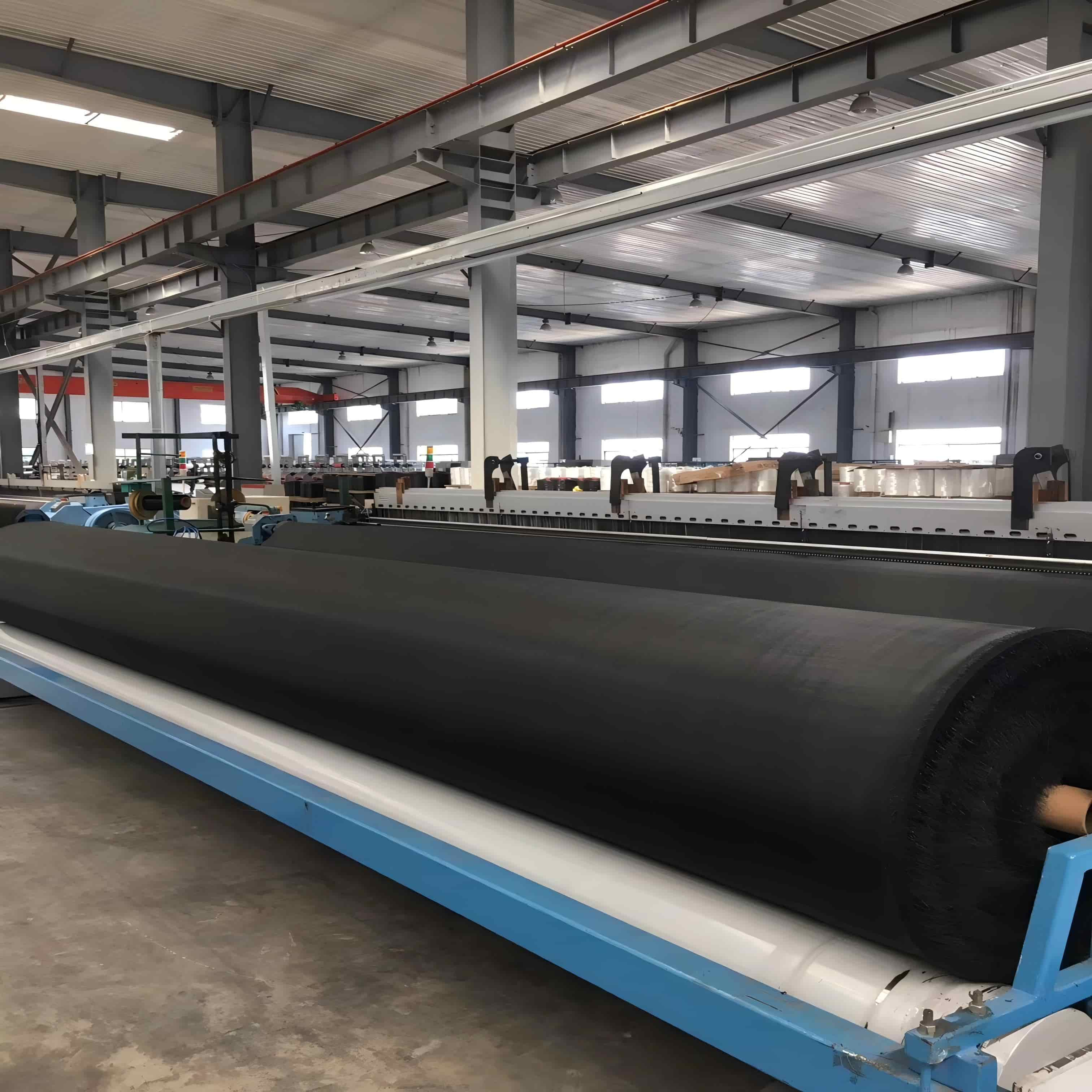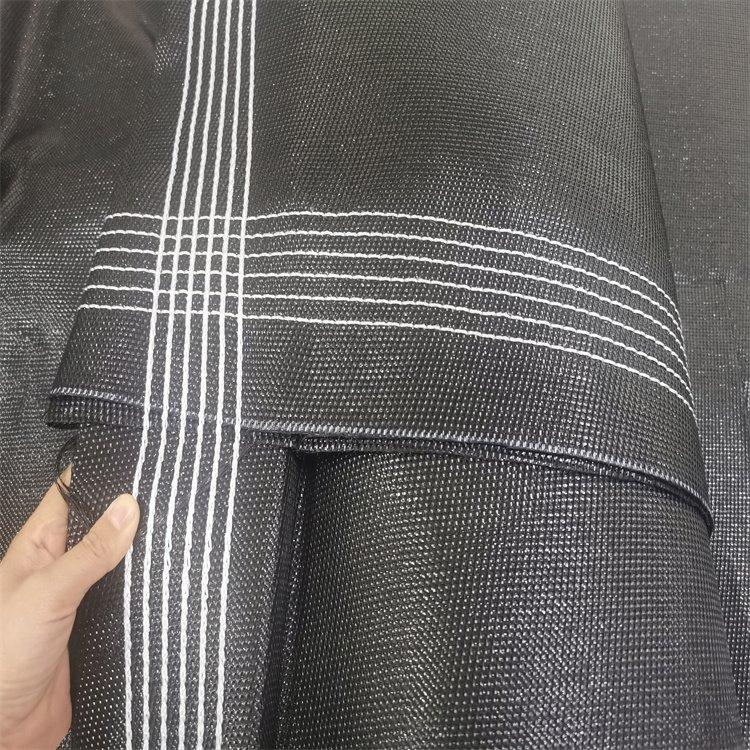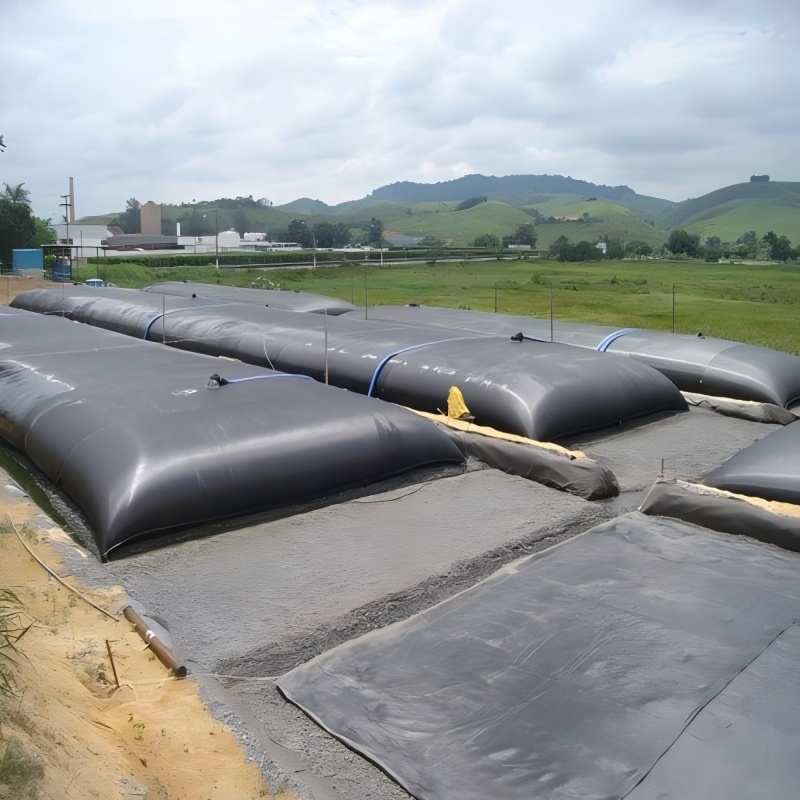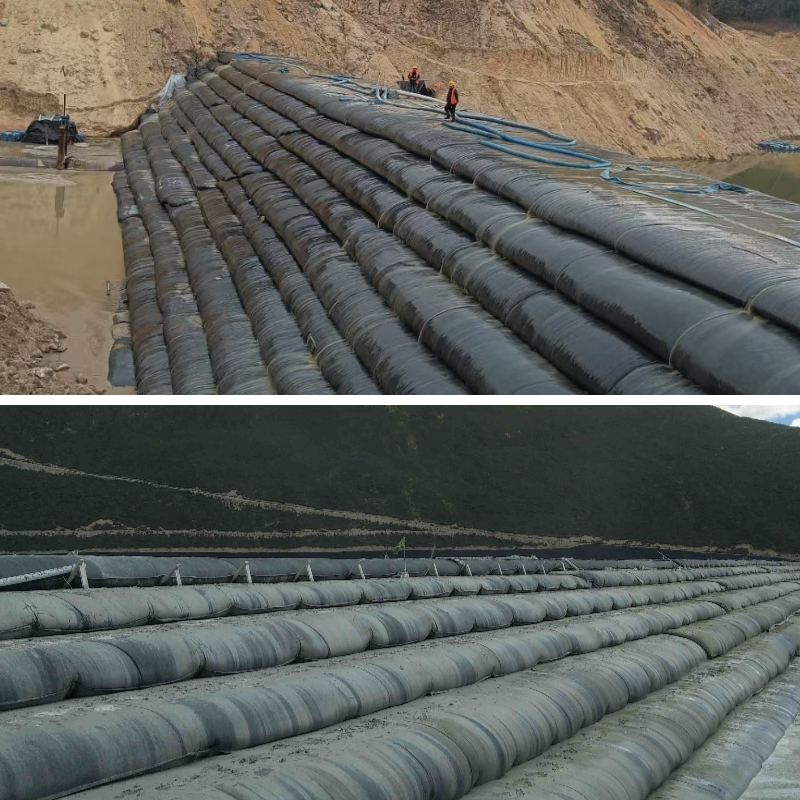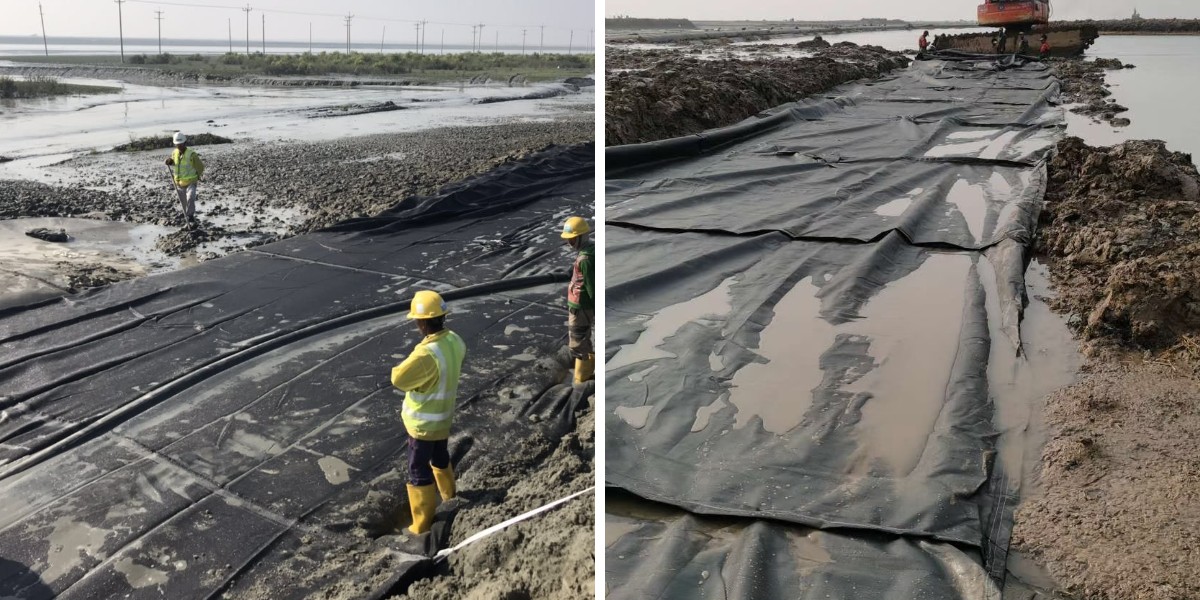Geotubes for Sludge Dewatering
1.Efficient dehydration: Porous water infiltration, self weight/pressure distribution, reducing water content and shrinkage cycle.
2.Easy to operate: Prefabricated tube bags, sealed with mud, can be used immediately without the need for complicated equipment and wide adaptability.
3.Solid waste volume reduction: After dehydration, the volume is greatly reduced, reducing transportation and disposal, and lowering treatment pressure.
4.Economic energy saving: Non sustainable energy consumption, partially reusable, and lower cost than traditional equipment.
Product Introduction
1. Basic attributes
The raw materials for Geotubes for Sludge Dewatering are high-strength synthetic fibers such as polypropylene and polyester, which are woven or non-woven to form tubular/bag shapes; Equipped with a porous structure, it is resistant to stretching, acid and alkali, and mostly exists in the form of prefabricated coils. It can be cut according to needs and is suitable for sludge treatment scenarios of different scales.
2. Core functions
Dehydration and dehumidification: By utilizing porous structure and self weight/external pressure, the moisture content of sludge can be quickly discharged, reducing the water content;
Capacity reduction: After dehydration, the volume of sludge is significantly reduced, reducing the amount of subsequent transportation and terminal disposal;
Storage anti fouling: As a temporary carrier, it can store untreated or dehydrated sludge to avoid secondary pollution caused by sludge leakage.
3. Main features
Easy to operate: The prefabricated form does not require complex assembly, and dehydration can be started by sealing with mud, with low requirements for the site;
Cost efficient: No need for continuous energy consumption, some types can be reused, and the overall cost is lower than traditional equipment such as plate and frame pressure filtration;
Stable performance: Strong corrosion and tensile resistance, able to adapt to the acidic and alkaline environment of sludge, ensuring stable dewatering process.
Product Paramete
project | unit | CWGD50S | CWGD90/120 | CWGD90S | CWGD100S | CWGD120S-B | CWGD120S-C | CWGD130S | CWGD200S-C | |
Tensile strength-radial | kN/m | 55 | 90 | 90 | 100 | 130 | 130 | 130 | 220 | |
Tensile strength-Weft | 50 | 120 | 90 | 100 | 120 | 120 | 130 | 210 | ||
Strain elongation-radial | % | 16±1 | 12±1 | 9±1 | 10±1 | 10±1 | 10±1 | 10±1 | 12±1 | |
Extensional elongation-Weft | 10±1 | 8±1 | 8±1 | 8±1 | 8±1 | 8±1 | 8±1 | 8±1 | ||
Breakage strength at 2% elongation | warp direction | kN/m | 5/15 | 14/40 | 30/30 | 30/30 | 20/40 | 22/40 | 20/45 | 15 |
Breakage strength at 5% elongation | warp direction | kN/m | 14/33 | 38/90 | 75/75 | 75/75 | 80/100 | 84/40 | 80/110 | 90 |
mass area ratio | g/m² | 285 | 440 | 390 | 430 | 540 | 540 | 560 | 850 | |
Joint tensile strength | kN/m | 35 | 90 | 60 | 70 | 100 | 100 | 110 | 170 | |
Static Burst Strength (CBR) | KN | 5 | 10 | 10 | 13 | 15 | 15 | 16 | 22 | |
Dynamic perforation | mm | 10 | 8 | 12 | 12 | 10 | 10 | 11 | 8 | |
Equivalent aperture (0g0) | mm | 0.9 | 0.48 | 0.52 | 0.45 | 0.4 | 0.3 | 0.43 | 0.4 | |
Permeability (Q50) | L/m²/s | 200 | 40 | 20 | 15 | 12 | 6.5 | 15 | 15 | |
Ultraviolet resistance (500h strong storage rate ) | % | 90 | 90 | 85 | 85 | 85 | 85 | 85 | 85 | |
Product Application
1. Municipal sewage treatment field
Suitable for the treatment of residual sludge generated by municipal sewage treatment plants, the sludge with high moisture content (usually 80% -90%) is poured into geotechnical pipes, and through the porous structure of the pipe body combined with natural drying or mild pressure, the moisture content of the dehydrated sludge can be reduced to 60% -70%. The reduced volume sludge is easy to transport to landfills or for resource utilization (such as organic fertilizer production), while avoiding environmental pollution caused by leakage during sludge transportation.
2. Industrial wastewater treatment scenarios
For industrial sludge (partially containing acidic and alkaline components) generated in industries such as chemical engineering, printing and dyeing, and food processing, the characteristics of soil pipes that are resistant to acidic and alkaline corrosion are utilized to dehydrate and reduce the volume of industrial sludge. For example, when dealing with sludge containing heavy metals in the chemical industry, geotextiles can be used as temporary storage and dewatering carriers to prevent harmful substances from leaking from the sludge. The volume reduction after dewatering can reduce the cost of hazardous waste disposal and meet the sludge treatment needs of small and medium-sized industrial enterprises.
3. River and water environment management
Used for the treatment of sediment generated during river dredging and lake dredging. The high moisture content sediment (with a moisture content often exceeding 90%) generated during dredging operations is introduced into geotechnical pipes and dehydrated at the shore or temporary treatment site. The discharged clean water can be treated and returned to the river channel. The dehydrated sediment (with a moisture content reduced to below 65%) can be used for river slope reinforcement, land reclamation, or safe landfill according to regulations to reduce the secondary pollution of dredging sediment to the surrounding environment.
4. Construction and infrastructure construction field
Suitable for the treatment of mud and sludge generated during construction pile driving and excavation of foundation pits. This type of sludge contains a large amount of sediment and has strong fluidity. It can be quickly separated from mud and water by using geotechnical pipes for dewatering. The discharged clean water can be recycled for construction (such as dust reduction and concrete mixing). The dewatered dry mud can be used as building backfill or transported for disposal as required, solving the problems of mud stacking and occupying land and polluting the site during the construction process. It is especially suitable for urban construction projects with limited space.
Geotextile pipes for sludge dewatering are widely used in four major fields: municipal, industrial, water environment, and construction, due to their characteristics of dewatering capacity reduction, anti fouling storage, and anti-corrosion adaptability. They can not only solve the pain points of high sludge moisture content, difficult disposal, and easy pollution in different scenarios, but also reduce treatment costs through clean water circulation and dry sludge resource utilization. At the same time, they are suitable for large, medium, and small projects and complex environments. They are a key equipment in the sludge treatment process that combines practicality and economy.


